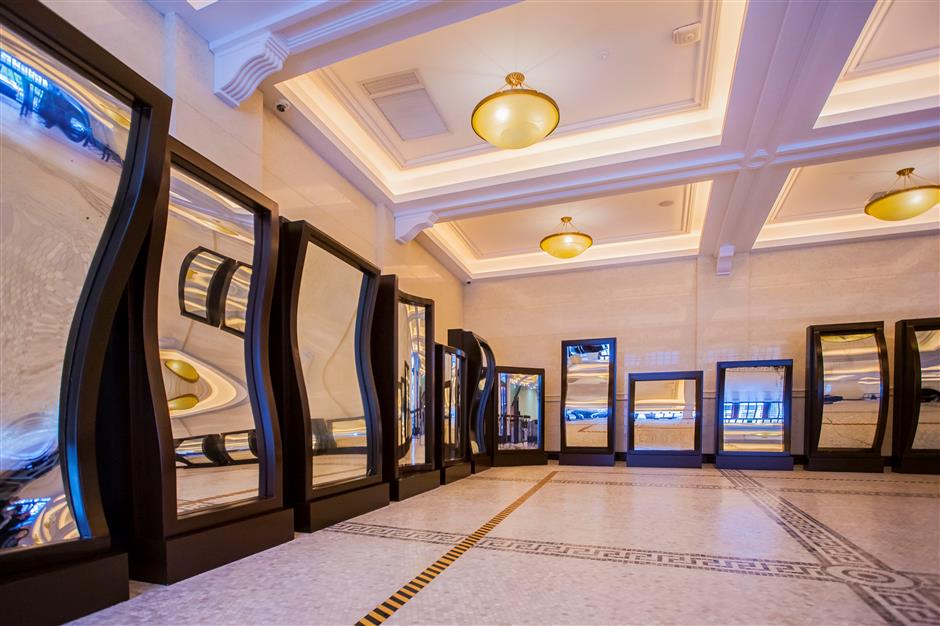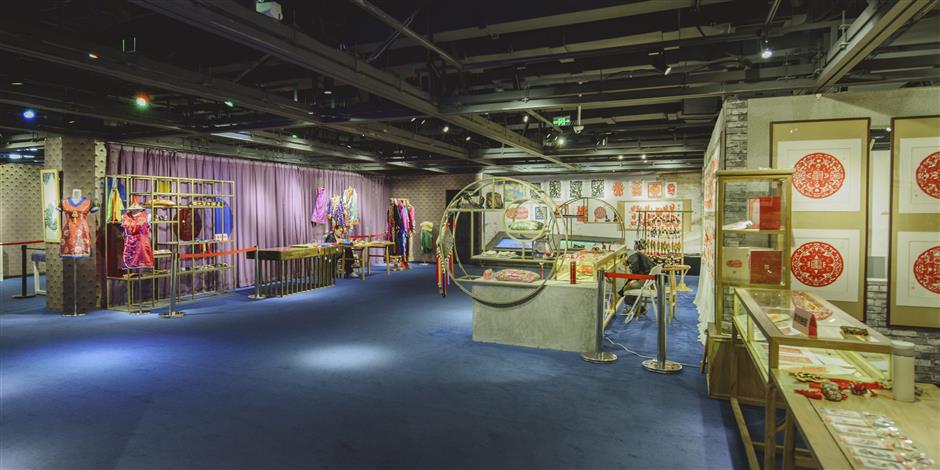'It looked like an aging warehouse'

The famous distored mirrors have all been repaired.
The Great World entertainment center was dilapidated and full of scars when architect Xing Tonghe surveyed it in 2004.
“The railings were cracked, the reinforcement bars exposed and the floors warped, while the distorted mirrors were very dusty,” recalls Xing. “After serving some 10,000 people every day for over 80 years, the Great World looked like an aging warehouse. I was so sad.”
Xing often visited the center as a boy and, some 60 years later, headed its restoration.
The challenging project lasted over a decade and was completed in 2016.
Xing divides the architectural history of the building into three periods — that of founder Huang Chujiu from 1917, the next owner Huang Jinrong from 1931 and the period after 1954 when it was managed by Shanghai government.
“The original Great World was a comparatively simple wooden building. But Huang Jinrong invited Chinese architect Zhou Huinan to renovate it into a four-story building with a monumental sharp tower stretching to the sky,” Xing says.
“At its best look during the Huang Jinrong period, the Great World was a well-designed architecture — integrated and harmonious. The signature tower was visible from afar. In old times, the building even had more exposure than the four big department stores on Nanjing Road,” Xing explains.
The veteran architect and his team decided to restore the building according to its look during that golden period, especially its prime time in the 1930s.

Architect Xing Tonghe, 80, who headed the renovation project
He consolidated the endangered structure, preserved the original mosaics on the floor, restored the facade, the promenade and the balconies, and rebuilt demolished pavilions on the top, according to historical photos and original drawings. While preserving historical details, he also took modern function into consideration.
“The Great World had no air-conditioning back then, so the wooden windows had to be all taken down during summertime to enhance circulation specially for its open-air theater. As the wooden windows were all aging, we replaced them with metal windows but painted to their original color,” Xing says.
During the project, an air-conditioning system was added to the century-old building as invisible as possible. The wooden staircases were changed to concrete to prevent fire. A new building was added alongside to house restaurants, since cooking is forbidden in the historical part.
To make better use of the open-air theater, Xing added a temporary steel structure to prevent wind and rain which can be removed if there are better solutions and techniques in the future.
Besides the Great World, Xing also designed the Shanghai Museum in 1993, another People’s Square landmark. The impressive form of the building, a combination of a circle on the top and a square underneath, is based on the shape of People’s Square, the former Shanghai racecourse.
“Today, the Great World, Shanghai Museum, Shanghai Concert Hall and Shanghai Grand Theater have formed a ring of urban cultural architecture at the People’s Square,” Xing says.

















